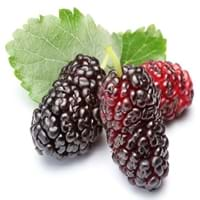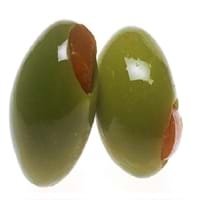Health Benefits
Anti-aging benefits, Boosts immune system, Cancer prevention, Flu treatment, Hair care, Heart care, Improves eye vision, Increases metabolic rate, Kidney stone treatment, Maintains healthy cholesterol level, Skin cleansing, Skin rejuvenation, Treatment of common cold, Treatment of skin Diseases
Cancer prevention, Helps in cartilage regeneration, Prevents macular degeneration, Treatment of alzheimer's disease
General Benefits
Boosts immune system, Controls blood sugar levels, Flu treatment, Improves eye vision, Maintains healthy cholesterol level, Treatment of common cold
Anti oxidant properties, Anti-inflammatory properties, Boosts immune system, Controls blood pressure, Digestive aid, Maintains healthy cholesterol level
Skin Benefits
Anti-aging benefits, Skin cleansing, Treatment of skin diseases
Hydrates skin, Skin rejuvenation, Treatment of skin diseases
Hair Benefits
Protects hair, Regulates hair growth
Acts as moisturizer, Good conditioner, Regulates hair growth
Allergy Symptoms
Breathing difficulty, Itching, Nasal congestion, Redness of eyes, Runny nose, Sneezing
NA
Side Effects
Decrease in blood sugar levels, Allergic reaction
Affects blood glucose levels, Dizziness, Stomach pain
Best Time to Eat
Best if taken as a breakfast (or empty stomach), As a snack in the late afternoon, Don't consume at night and before bed, Eat the fresh ones, avoid mixing with any other foods, don't eat after meal., Morning time (before lunch)
Hardly eaten raw, Olive oil is consumed for many purposes.
Vitamin B5 (Pantothenic Acid)
Not Available
Vitamin C (Ascorbic Acid)
Vitamin K (Phyllochinone)
Calories in Fresh Fruit with Peel
Calories in Fresh Fruit without Peel
Not Available
Not Available
Calories in Frozen Form
Not Available
Calories in Canned Form
Not Available
Season
Spring, Summer
Spring, Summer
Varieties
Charparral, Pendula, Teas, Bellaire and Lingan
Manzanillo, Sevillano, Mission, Ascolano, Barouni, Gordal, Rubra and Picholine
Color
Pink, Purple, White
Black, Green, Purple, Yellow
Origin
China
Eastern Mediterranean Region
Soil Type
Clay, Loam
Well-drained
Climatic Conditions
Sunny
Warm to hot climate
Facts about
- It can take up to 10 years for a tree to produce mulberry fruit.
- Mulberry leaves are fed to silkworms to enhance silk production.
- In Germany, they say that devil uses root of mulberry tree to polish his boots.
- In ancient Greece, 1st eye shadow was made by adding olive oil in ground charcoal.
- The most expensive form of olive oil is Extra Virgin.
- Largest type of olive tree is known as donkey tree & smallest one is called bullet.
Other Countries
Colombia, Egypt, India, Indonesia, Kenya, Mexico, Pakistan, Peru, Russia, United States of America
Algeria, Egypt, Greece, Italy, Morocco, Portugal, Syria, Tunisia, Turkey
Top Importer
Not Available
United States of America
Botanical Name
Morus Alba
Olea europaea
Synonym
Morus atropurpurea or Morus multicaulis
Not Available
Subkingdom
Tracheobionta
Tracheobionta
Division
Magnoliophyta
Magnoliophyta
Class
Magnoliopsida
Magnoliopsida
Subclass
Alismidae
Rosidae
Species
M. alba
O. europaea
Generic Group
Mulberry
Olive
Difference Between Mulberry and Olive
We might think that Mulberry and Olive are similar with respect to nutritional value and health benefits. But the nutrient content of both fruits is different. Mulberry and Olive Facts such as their taste, shape, color, and size are also distinct. The difference between Mulberry and Olive is explained here.
The amount of calories in 100 gm of fresh Mulberry and Olive with peel is 43.00 kcal and 115.00 kcal and the amount of calories without peel is Not Available and Not Available respectively. Thus, Mulberry and Olive belong to Low Calorie Fruits and High Calorie Fruits category.These fruits might or might not differ with respect to their scientific classification. The order of Mulberry and Olive is Rosales and Lamiales respectively. Mulberry belongs to Moraceae family and Olive belongs to Oleaceae family. Mulberry belongs to Morus genus of M. alba species and Olive belongs to Olea genus of O. europaea species. Beings plants, both fruits belong to Plantae Kingdom.









